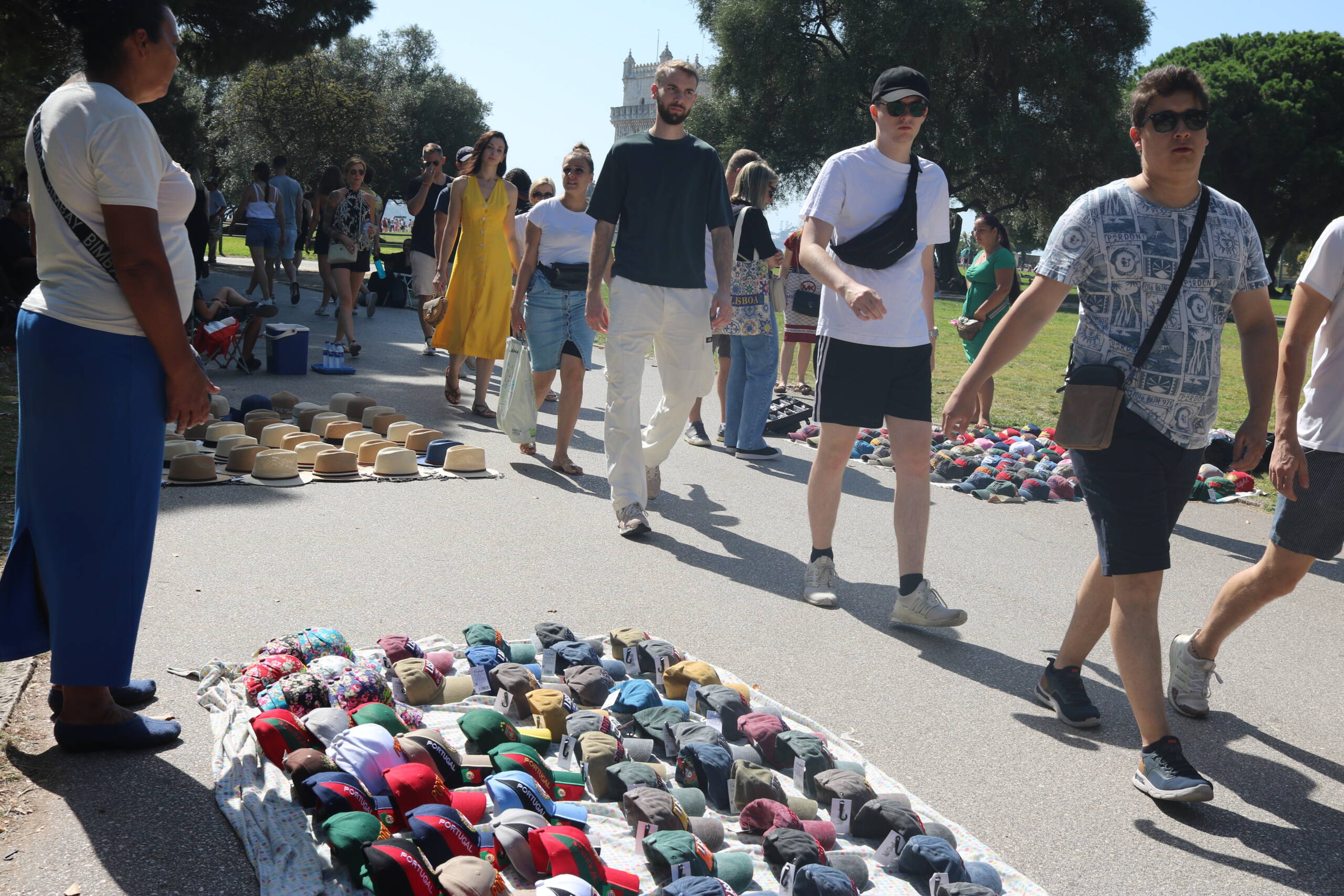Tourist areas, especially in cities like Lisbon, Barcelona, Rome, or Paris, are full of scenes that look harmless on the surface: colorful stalls spread across the pavement, piles of cheap hats and T-shirts laid out on blankets, and vendors calling out for passing tourists to stop and buy. At first sight, it might seem like a casual part of the local culture, but the truth is far more problematic. These street setups are rarely about honest commerce; more often than not, they are gateways to crime, fraud, and even outright danger for unsuspecting visitors.

The merchandise itself is usually worthless. Mass-produced caps, imitation designer bags, fake sunglasses, and hats that barely last a few days are presented as souvenirs, but they are nothing more than low-quality imports designed to trick tourists into wasting money. These items are sold illegally, without licenses, without quality control, and without taxes. Tourists often end up paying inflated prices for goods that wouldn’t survive a single season back home. In many cases, counterfeit goods are involved, and purchasing them—even unknowingly—can land the buyer in legal trouble if customs decides to enforce penalties on return.
But the real threat goes beyond bad merchandise. Street vending in tourist hubs is frequently linked to organized crime networks. Many vendors are controlled by larger groups who use them as pawns. The setup is not just about selling caps or hats; it is also about creating opportunities for distraction. While one vendor is drawing attention to the goods, others nearby may be scanning the crowd for easy pickpocketing targets. This is a common tactic: the artificial chaos of negotiation and movement provides cover for thieves to slip hands into bags, unzip backpacks, or cut open purses. Tourists are ideal prey—distracted, carrying cash, phones, passports, and usually unfamiliar with the tactics being used against them.
Another risk comes from fraud and intimidation. It is not uncommon for tourists who show interest in an item to be pressured into buying, sometimes aggressively. Once you stop to look, walking away can become awkward or confrontational, with vendors blocking the path, shouting, or trying to guilt people into paying. Payment itself can be a trap—credit cards may be skimmed with portable readers, while cash transactions can involve fake bills slipped into the exchange. In some cases, if police approach, vendors may suddenly vanish, leaving tourists caught in the middle of an uncomfortable situation.
There is also the wider problem of safety. Street vendors often operate in groups with lookouts who monitor the area for police or security. These groups move quickly, sometimes running in large numbers when chased, creating dangerous stampedes through crowded tourist zones. Visitors caught in these sudden rushes risk theft, injury, or simply being knocked down. Moreover, buying from illegal vendors indirectly supports these networks, fueling cycles of crime, tax evasion, and exploitation that hurt both the local community and other tourists.
For anyone traveling in major tourist cities, the rule should be simple: never buy anything from street vendors. Not a hat, not a T-shirt, not even a bottle of water. What looks like a harmless purchase can easily become the first step in a scam, a setup for a pickpocket, or involvement in counterfeit crime. Stick to official shops, licensed stalls, and established local businesses. Street vendors thrive on the illusion that they are offering something cheap, fun, and cultural. In reality, they are selling risk, theft, and trouble wrapped up in flimsy merchandise.
The next time you see neat rows of hats laid out on a blanket under the summer sun, remember: behind that display is an entire system built on scams and distractions. The safest choice is to walk past without stopping, without making eye contact, and without opening your wallet. In tourist hotspots, caution is not paranoia—it is survival.
Leave a Reply